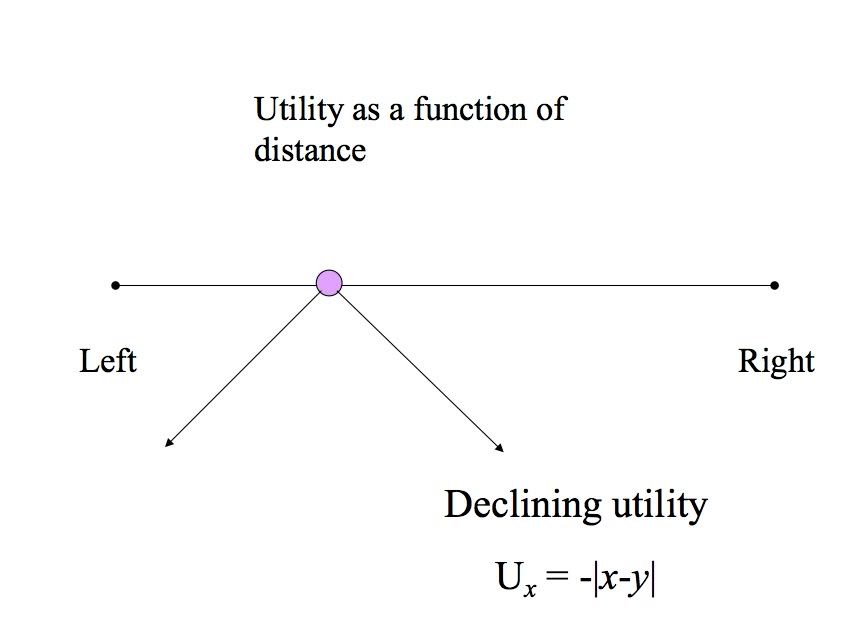roastpuff
Headphoneus Supremus
- Joined
- Sep 27, 2005
- Posts
- 2,349
- Likes
- 11
Hi guys, I'm working on my strategy of politics essay right now, and I have to admit that I'm a bit stumped regarding the question's request to create a model.
Here is the question: Quote:
Now, this apparently also has to do with the political theory of the median voter as well.
The idea that I have for a one-dimensional spatial model is something like this:

I was just wondering if anyone could confirm that the model is in the correct direction, and if I should remember anything especially important regarding the situation and the median voter theorem.
Thanks!
Here is the question: Quote:
| Francis Hincks’ views on the double-majority majority are interesting. On one hand, Hincks, a long-serving minister and premier, had commented that the principle was “exceedingly desirable in practical politics, but quite absurd as a constitutional requirement.” On the other hand, when forced from government to opposition in 1844, Hincks wrote to Baldwin: “You are, of course, aware of how strongly Lafontaine holds to the principle of the two majorities, and to the federal system as Wakefield calls it. I think this is quite absurd... Nevertheless, I would have no objections to see it [the double majority principle] tried. It is a do-nothing policy that would serve us...” (Longley 1943, 146). Develop a one-dimensional spatial model that helps to explain why Hinck’s opposed the double-majority principle when he was in government and supported it when he was in opposition. |
Now, this apparently also has to do with the political theory of the median voter as well.
The idea that I have for a one-dimensional spatial model is something like this:

I was just wondering if anyone could confirm that the model is in the correct direction, and if I should remember anything especially important regarding the situation and the median voter theorem.
Thanks!

